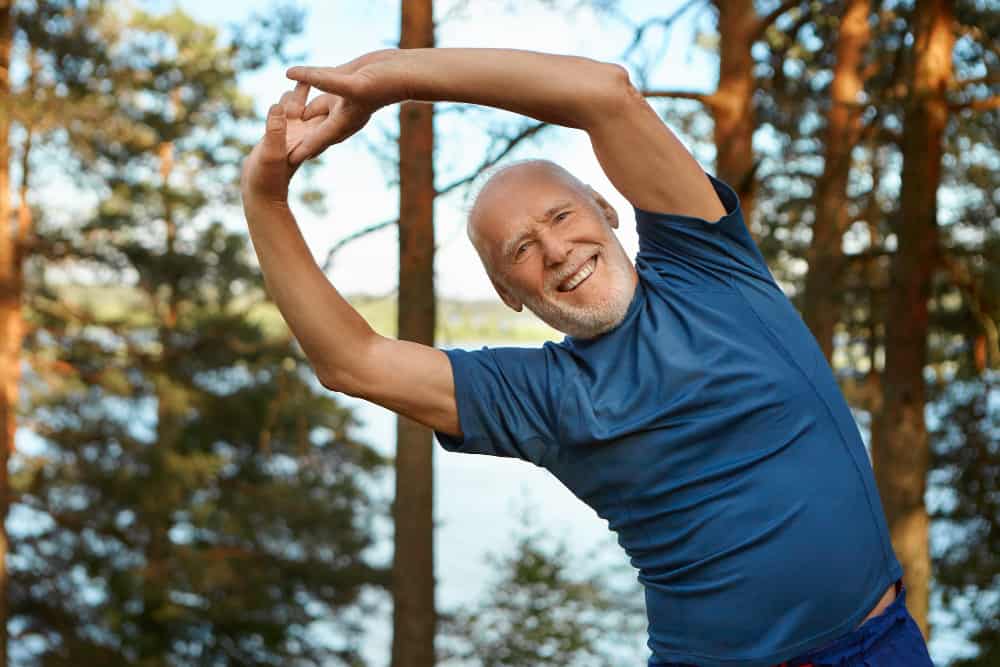

envelhecimento ativo
Age is approaching for all of us, and although it presents some challenges, it is possible to live well, even as the years go by. The concept of active aging is becoming increasingly relevant, and that is exactly what we are going to talk about today!
Several countries such as Singapore and Portugal, and many other developed countries, are facing a rapidly aging population. The expectation is that by 2030, one in five people will be 65 or older. So ensuring that this increasingly graying population leads healthy, productive, empowered, and dignified lives is a challenge that involves individual effort, political will, and community participation.
One way to make the aging process lighter and ensure that the senior population continues to have a high quality of life is to disseminate the concept of active aging and its pillars. So, continue with us to learn all about it!
Active aging is a concept created by the World Health Organization that evokes the idea of a more active and healthy old age, whether in the work sphere or in the social sphere, including greater engagement of the elderly with issues important to society, such as politics and citizen participation.
Active aging is also considered a holistic approach that helps a person optimize their physical, mental and social health, be actively engaged in society, and have the financial security to lead a good quality of life.
This concept starts not only when you get older, but is a mindset that applies to anyone at any stage of life. Primarily, aging in place helps to promote healthy living and consequently extend the life expectancy and quality of life for all people (including those who are frail, disabled and in need of care) as they age.
Finally, according to studies on successful aging, genetics affects only one-third of how well we age; two-thirds is based on what we can control: our personal lifestyle choices. Therefore, attitude and lifestyle are the key factors not only for longevity, but also for quality of life.
Other factors that affect healthy longevity include the broader social and socioeconomic landscape. That is, this includes culture and gender; behavior, biology, and genetics; economics; your social circle; existing health systems and social services; and the environment.
Culture influences many decisions. One of these is the expectation that the woman in the family should be a caregiver for a sick spouse or an aging parent. Then caregiving responsibilities in turn affect a woman’s financial independence and in the long run are linked to increased poverty and health problems in old age.
Lifestyle habits have been shown to impact a person’s longevity and quality of life. So while much of aging is genetically determined and cannot be changed. Soon, your state of health is also a result of genetics, environment, lifestyle, and nutrition. This means that the right lifestyle, behavior, and mindset can delay or prevent the onset of certain diseases.
Perhaps this is one of the most obvious factors. Income, work opportunities, and social protection all impact financial well-being in old age. Any form of work (formal, informal, or voluntary) can increase social contact and psychological well-being, and gives seniors a sense of purpose and creates financial security. In addition, having money during old age to take care of one’s own health and invest in leisure time also contributes positively to active aging.
Social support and participation in the community are important aspects of aging well. Encouraging intergenerational interaction also develops social well-being. In addition, it allows younger people to have more positive and realistic attitudes toward the older generation. There is a taboo, for example, that older people do not perform as well in psychological counseling; this is not only not true, but also the involvement in the social circle.
To promote active aging, health systems need to focus on health promotion. As well as, disease prevention and maintaining access to quality primary health care and long-term care facilities. After all, there is no way to have active aging without keeping up with health care.
A friendly and accessible environment for seniors is important to support the changing physical needs of seniors so they can remain independent and active. Wide steps with gentle slopes, handrails, wheelchair-accessible paths and doors, accessible elevators, and accessible public transportation services allow people of all ages and circumstances to participate in family or community life, and decrease the occurrence of accidents.
Now let’s look at some practical steps you can take to engage with active aging?
Finally, if you want to continue to stay informed about healthy lifestyles and have access to the best content for seniors, keep following us here!
As our parents age, our roles and responsibilities within the family naturally undergo a significant…
As we age, maintaining social connections becomes increasingly important for our overall well-being and quality…
Senior dance is a captivating and healthy form of exercise that offers a wide range…
Aging is a natural and inevitable process that brings about changes in our bodies. Our…
Aging is a natural part of life, and maintaining good health and vitality as we…
When the time comes to make decisions about elderly care, finding the right care home…